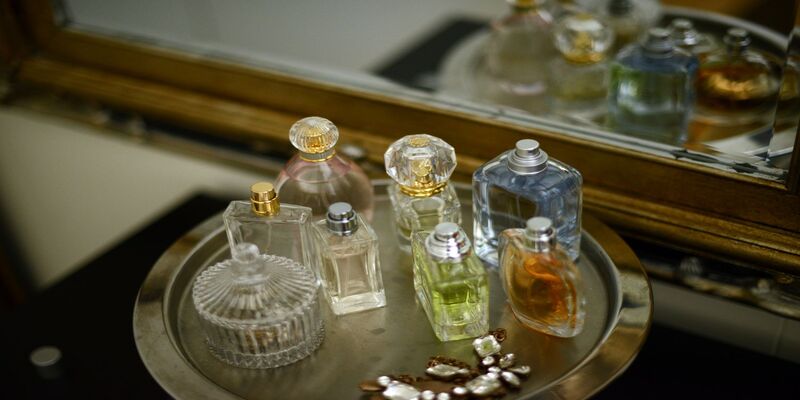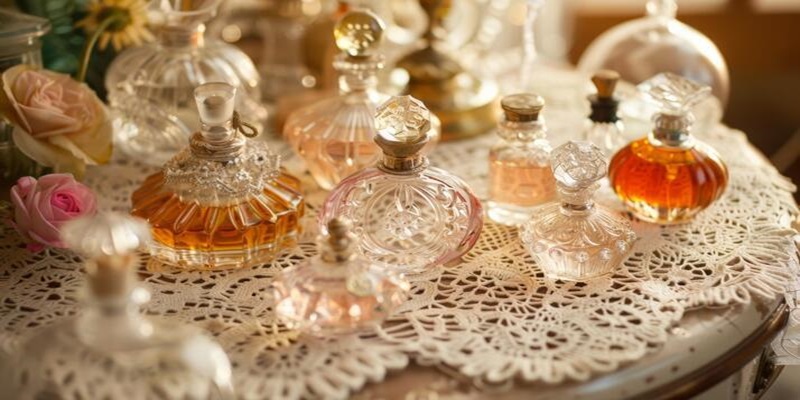Home
Beauty
How To Store Your Perfume To Preserve Its Scent
Perfumes are not merely scents but exquisite reflections of our identity, encapsulating cherished memories and emotions within ornate bottles. Just like fine wine or gourmet cheese, the quality of a fragrance is delicate and can be heavily influenced by its environment. Correct perfume storage practices can dramatically enhance your cherished scents' longevity and vibrancy. Various environmental factors, including heat, light, and air exposure, can disrupt the intricate balance of fragrance notes, potentially leading to spoilage or fading over time. Understanding the nuances of preserving your fragrances is essential. This extensive guide will cover best practices for storing perfumes successfully while helping you avoid common mistakes that can lead to premature deterioration. Join us in exploring the art of perfume preservation, ensuring that each spritz remains as captivating and fresh as the first.
Perfumes are not merely scents but exquisite reflections of our identity, encapsulating cherished memories and emotions within ornate bottles. Just like fine wine or gourmet cheese, the quality of a fragrance is delicate and can be heavily influenced by its environment. Correct perfume storage practices can dramatically enhance your cherished scents' longevity and vibrancy. Various environmental factors, including heat, light, and air exposure, can disrupt the intricate balance of fragrance notes, potentially leading to spoilage or fading over time. Understanding the nuances of preserving your fragrances is essential. This extensive guide will cover best practices for storing perfumes successfully while helping you avoid common mistakes that can lead to premature deterioration. Join us in exploring the art of perfume preservation, ensuring that each spritz remains as captivating and fresh as the first.

Understanding Perfume Composition
Perfume construction is a complex art form composed of three essential notes: top notes, middle notes, and base notes. Each layer significantly influences how the fragrance unfolds and evolves.
Top Notes: These are the initial scents detected upon application. They are typically bright and light, encompassing citrus or herbal fragrances. They evaporate quickly, usually within 15-30 minutes, setting the initial impression of the fragrance.
Middle Notes (or heart notes): Surfacing once the top notes dissipate, these establish the fragrance's core. Generally more prosperous and robust, they may embody floral or spicy facets and linger for several hours.
Base Notes: As the foundation of any perfume, these notes impart lasting depth and warmth. Ingredients like amber, sandalwood, and vanilla can be detected long after the middle notes fade, often persisting for hours or even days. Environmental conditions significantly influence the way these notes interact and change. For instance, light exposure can degrade specific fragrance molecules, altering the complete Scent profile. Meanwhile, temperature fluctuations can accelerate the evaporation of volatile substances, and high humidity levels may accentuate some aromas while also encouraging spoilage. Thus, understanding these components and their sensitivities is vital to effectively preserving perfumes.
Ideal Storage Conditions
It is crucial to follow ideal storage conditions to ensure your perfumes remain enchanting and retain their potency over time. Three primary factors include temperature, light exposure, and humidity levels.
Temperature: The ideal range for perfume storage typically falls between 15°C to 20°C (59°F to 68°F). Storing fragrances within this temperature bracket minimizes the risk of degradation while helping maintain the unique olfactory characteristics intended by the perfumer. Extreme temperature variations can trigger chemical alterations within the perfume, resulting in unpleasant scents or spoilage. It's crucial to avoid areas near heat sources—such as radiators or those basked in direct sunlight—which can rapidly deteriorate the fragrance's integrity.
Light, particularly ultraviolet (UV) radiation, significantly threatens perfume longevity. When storing fragrances, keeping them in a dark environment is indispensable, as light can provoke molecules' breakdown, altering the Scent and even decreasing its lifespan. Dark cabinets or the original packaging in which the perfume was purchased can help safeguard against light exposure, preserving the original quality of the fragrance for extended use.
Humidity: The moisture level in your storage area is another critical component affecting Scent preservation. Excess humidity can instigate chemical reactions that may alter the Scent profile. A humid environment raises the potential for contamination and mould growth in inadequately sealed bottles. Therefore, storing perfumes in dry settings with stable, lower humidity levels is vital. Ideally, select storage locations that are cool and dry, steering clear of areas prone to high moisture levels, like bathrooms prone to significant humidity fluctuations. In summary, maintaining a consistent temperature, shielding perfumes from light, and ensuring a dry storage environment can significantly enhance the longevity of your treasured fragrances. These straightforward but effective practices guarantee that every spritz remains as captivating as the first.
Best Storage Options
Effective storage methods are crucial in preserving the integrity and longevity of your perfumes. A fundamental best practice is to keep your fragrances in their original packaging, as these boxes are specifically designed to shield the bottle from exposure to light and fluctuating temperatures. The cardboard cartons provide insulation and fend off dust and debris, thus safeguarding the Scent's purity. When selecting the appropriate storage space, consider using a dark cabinet, a dedicated closet, or even a specialized perfume case. The optimal environment is cool and dry, minimizing unnecessary exposure to sunlight and heat. For example, storing perfumes in a cabinet can protect them from UV rays that could change their composition over time.
Meanwhile, a specified case can securely house bottles upright, limiting the chances of leaks or spills. Avoid common mistakes, such as storing perfumes in bathrooms or near windows. Bathrooms often experience elevated humidity and variable temperature ranges, which can lead to a breakdown of delicate fragrance notes. Direct sunlight poses a risk, as it can decompose chemical compounds, resulting in spoilage. By being conscious of these recommended storage solutions, you can maintain your perfumes' original Scent profiles, allowing you to enjoy them for many years.

How To Test Your Perfume Quality
To ensure your cherished fragrances continue to mesmerize you with their delightful aromas, it's imperative to conduct regular quality assessments. Like perishable goods, perfumes can spoil, and early recognition of spoilage is key to preventing disappointment. A critical indicator of spoilage includes colour changes; if a previously clear or faint perfume darkens substantially, this may signal chemical degradation. Additionally, cloudiness that develops in once-clear liquids can imply that your Scent is past its prime. The fragrance itself can also reveal much about the perfume's longevity. If you detect any distinctly altered aroma, such as sour or acrid notes that were absent before, you should stop using that fragrance immediately. Consider a straightforward sniff test to ascertain whether the Scent retains its original profile. Spray the perfume onto a testing strip and allow it to dry briefly; afterwards, take a good whiff. If available, compare the Scent with a fresh sample to determine if the initial notes remain prominent. Conducting these evaluations regularly will enhance your ability to enjoy your perfumes at their peak, maximizing their lifespan.
Special Care For Different Types Of Perfumes
Understanding that not all fragrances are created equally can significantly affect perfume preservation. Various types possess unique compositions and qualities, necessitating distinct handling and storage methods to ensure they stay as exquisite as the day they were first purchased.
Eau de Parfum vs. Eau de Toilette Eau de Parfum (EDP) typically contains a higher concentration of fragrance oils, ranging from 15% to 20%, which prolongs its longevity on the skin. Storing EDPs in a superb, dark location, such as a drawer or cabinet shielded from direct sunlight, is critical. Heat can compromise the oils, modifying their Scent profiles. Conversely, Eau de Toilette (EDT)—with a lighter concentration (5% to 15%)—is less sensitive to temperature changes but still fares best when kept away from extreme heat or persistent exposure to sunlight.
Special Care for Niche and Expensive Fragrances For owners of niche or high-end fragrances, additional precautions are highly recommended. Consider investing in a dedicated perfume refrigerator, which can uphold an optimal temperature of approximately 13°C (about 55°F). This can significantly prolong the life of your treasured scents. It is advisable always to store bottles upright to avoid leaks and ensure caps are tightly secured to prevent oxidation. If your fragrance includes delicate components like florals or spices, consider placing them within a dark glass cabinet for optimal protection against light exposure.
Maintaining The Integrity Of Your Fragrance Collection
Ultimately, gaining a deeper understanding of your fragrances' unique characteristics enhances their longevity and enriches the overall aromatic experience. By applying these tailored tips, you can ensure your prized scents will continue to captivate your senses for many years.









